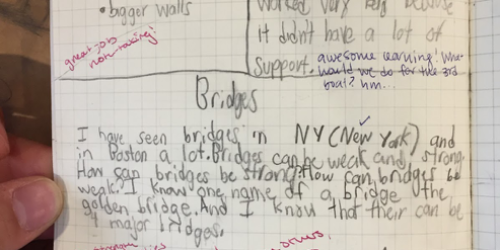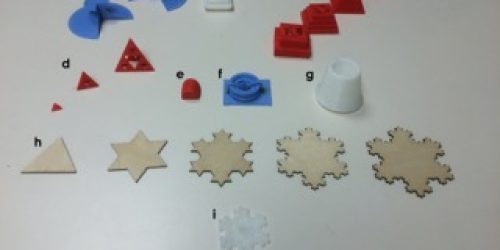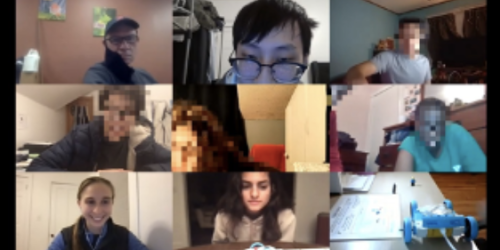article by Fay Shaw, Post Doctoral Research Associate
work by Kathleen Robinson and Amanda Strawhacker
In the Spring 2018 semester, students in the Child Development course, Children & New Technology (CD114), collaboratively created a quilt for the Eliot-Pearson Early Childhood Makerspace. The goal of the course was to explore ways to better integrate technology into learning environments, such as makerspaces. The interdisciplinary course focused on developmental learning and design theories while also exploring the impact of computer programming, virtual communities, computer games, social media, and other digital technologies in the lives of young people. Students applied their theoretical knowledge and designed a new technology for young children in collaboration with a team of engineers.
The quilt, called the EnLIGHTening Quilt, demonstrates how creativity, collaboration, and technology can be combined in a way that is inclusive and exciting. Each student made their own tile using felt, LED lights, and conductive thread. The tiles were arranged together to form a quilt. These sewable circuits are called electronic textiles (e-textiles); conductive thread is used in place of wires that are found in traditional electronics.
The design task involved both the engineering design of a circuit along with aesthetic design. It can be challenging to create a design that not only looks, but also functions, as desired. The students took various approaches to their designs. Some students had a very clear purpose and planned from the start, while others needed more creative tinkering time to make a their designs. Still others needed to start over many times to achieve something that worked or looked the way they wanted. Each student engaged differently in the design process of ideation, testing, prototyping, and iterating. There was a lot of peer-talk and consulting guest e-textiles experts. Student interaction included asking for help to find the correct supplies or access to shared resources. Students also complimented their classmates’ felt color choices, overall design, and location of the LEDs on the quilt block.
The major learnings of this activity included:
- the physical activity of exploring circuitry (and how circuits need to be connected)
- stitching and creating an e-textiles construction.
While e-textiles has been gaining popularity in the last ten years, it is still a new fabrication technique for many. We aimed to provide a focused, digitally-enriched experience that also led to community-building through the design process. The physical quilt is a manifestation of the students’ work and meaningfully represents their community.
Through participation in the soft circuit activity, students developed an understanding of the value of a community space in which people can come together to learn, share equipment, and collaborate on projects that focus mainly on technology or computing. This activity was one of the many digital technologies in this course that have an impact the young people. In participating in this interdisciplinary course, the students not only learned about developmental learning and design theories, they learned to design with children in mind. Please check out the DevTech group for more information!



